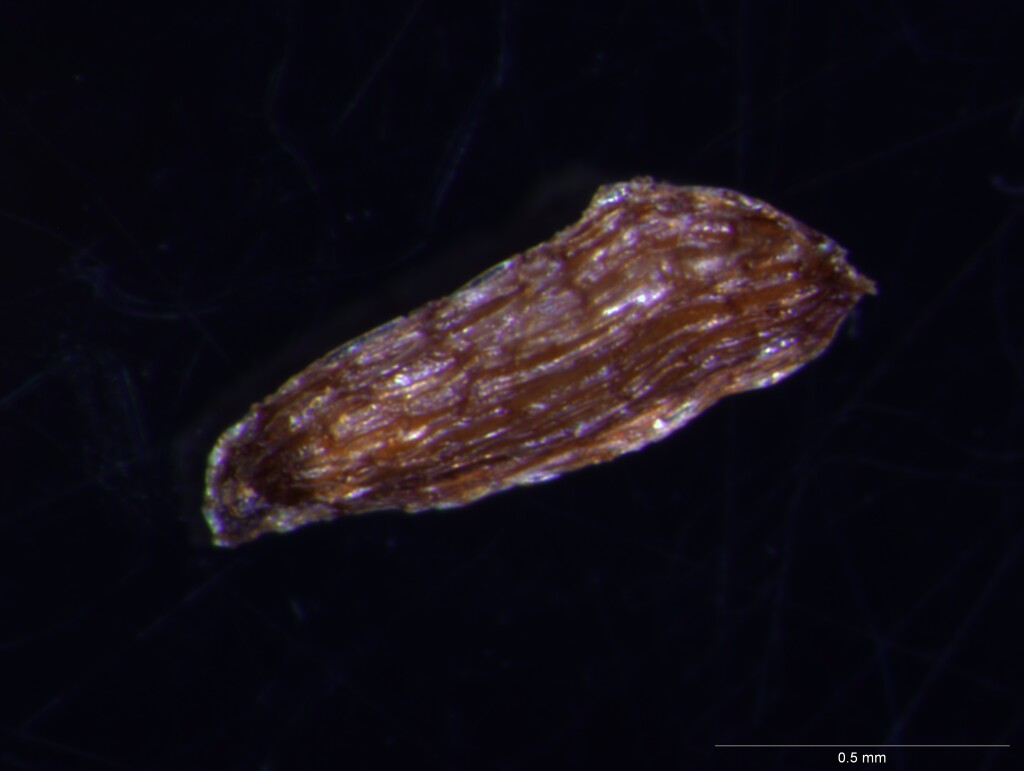Kunzea sp. (Scrubby form)
Tangled BurganErect or bushy shrub, 1–4 m high, often suckering; bark on young stems fibrous-corky; young stems minutely pubescent. Leaves alternate, oblanceolate to obovate, spreading, 6–10 mm long, 1–3 mm wide, bright green to grey-green, glabrous to glabrescent, hairs often restricted to margins, more or less flat; apex acute to acuminate; margins entire; petiole c. 0.5 mm long. Flowers white, crowded in upper leaf axils or on leafy side branches; pedicels 3–5 mm long, glabrous to glabrescent; floral bracts absent; hypanthium glabrous to glabrescent, rugulose, 2–2.5 mm long; sepals green, reddish at base, triangular, 1–1.5 mm long; petals orbicular, c. 1.5–2.5 mm diam.; stamens white, 20–35, 1–4 mm long, some shorter than petals; style 1.5–2.5 mm long; ovary usually 3-celled. Fruit c. 2.5 mm long, c. 3.5 mm diam., not woody, dehiscent by terminal valves. Flowers Nov.–Dec.
EGL, EGU. Apparently restricted to relatively dry sites east of Bairnsdale.
Kunzea leptospermoides, K. peduncularis, K. phylicoides, K. sp. (Scrubby form) and K. sp. (Upright form) were previously all included in K. ericoides (A.Rich.) Joy Thomps. Kunzea ericoides sensu stricto is now thought to be endemic to New Zealand. The distinction between these 5 Victorian taxa is often slight at best, and clear patterns between them are often blurred by the apparent widespread hybridisation in this complex. Inspection of bark and a sound knowledge of the range of variation seen in species is often required for identification. A full treatment of this species complex is still to be completed; as such the above description should be treated as interim. It is based on a very limited number of specimens selected largely by their distribution and presence of a few key features, and does not account for variation seen in putative hybrid forms.
Closely resembles Kunzea sp. (Upright form), but generally distinguished by its lower, ‘twiggy’ habit and tendency to be a re-sprouter, the somewhat persistent bark, and the shorter hypanthium. Both species have been recorded east of Bairnsdale, however, Kunzea sp. (Scrubby form) tends to occupy drier sites than K. sp. (Upright form) in this region.
Plants with somewhat persistent, corky bark that have been recorded in areas immediately east of Melbourne (eg. Millgrove and Kinglake) closely resemble this species. However, these plants are likely to be hybrids between K. leptospermoides and K. sp. (Upright form) rather than extreme western outliers of K. sp. (Scrubby form).
 Spinning
Spinning